Primary Indication of Extra-Osseous Talotarsal Joint Stabilization (EOTTS)
Extra-Osseous Talotarsal Joint Stabilization (EOTTS) is a minimally invasive surgical procedure that involves the insertion of an internal fixation device, stent, into the sinus tarsi. The goal of this stent is to realign and stabilize hindfoot, while still allowing a normal joint range of motion.
There is only one primary indication/diagnosis that a surgeon would recommend EOTTS to a patient and that is talotarsal joint dislocation. The majority of cases where EOTTS is performed are for Recurrent Talotarsal Joint Dislocation (RTTJD), as opposed to the minority of cases where there is a fixed deformity such as a tarsal coalition. RTTJD is a pathologic anomaly where the talus repeatedly dislocates on the calcaneus and/or the navicular bone. This deformity wills never auto-repair. It won’t get better; it will only get worse and has been proven to be the underlying etiology to many chronic lower extremity pathologies
The use of an EOTTS stent is not an option until the individual has celebrated their third birthday. The reason is that the chamber forming the sinus tarsi does not become ossified until 3 years of age.
What is Flat Foot?
Flatfoot,medically known as pes planus,is a condition where the arches of the feet have collapsed. All babies have flat feet at birth and start developing arches typically by age 6 up to the age of 10. Flat foot tends to be a very common condition with estimates suggesting that it occurs in around 1 in 5 individuals. A quick test can be conducted by looking at the foot position when standing, sitting and walking. Typically, the arches of children may not fully develop until the age of 10, therefore it can be difficult to assess whether they have a flat foot until this age. If you are still unsure, arrange an appointment with your healthcare doctor,podiatrist,physical therapists,or chiropractors.
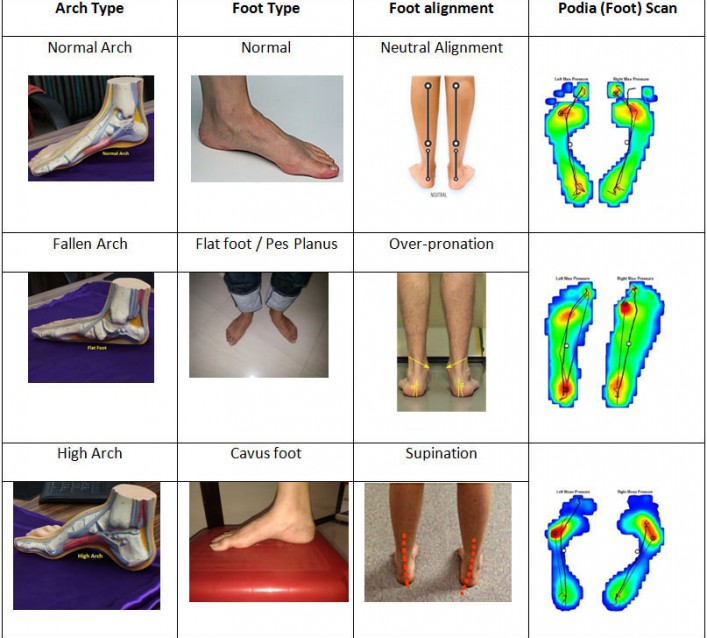
Secondary Symptoms of Recurrent Talotarsal Joint Dislocation (RTTJD)
For some individuals, these symptoms show up in childhood, whereas there are others who don’t develop symptoms until old age. There are many factors that contribute to the development of symptoms. But the bottom line is it’s not if, it’s when.Childhood symptoms of RTTJ begin with growing pains, shin splints, children not wanting to participate in sports, wanting to be carried more than usual,to suffering after a period of walking or running. Later in life these RTTJD patients will develop heel pain, heel spurs, plantar fasciitis, posterior tibial tendon dysfunction, bunions, big toe joint arthritis, hammertoes, plantar neuropathy, ankle joint problems, knee joint instability and arthritis, hip pain, sciatica, sacroiliac instability, and many issues to their spine. Even worse are the long-term health issues that are related to inactivity. If it hurts when you walk, you stop walking or exercising. This leads to decreased metabolism and weight gain. Eventually, the person becomes obese.
Advantages of EOTTS or Sinus Tarsi Screw
EOTTS or sinus tarsi screw can be performed on both children and adults. Patients can walk, run, and perform any activity of their choice, once the tissues have recovered from the initial procedure. The muscles, ligaments, and tendons will work more efficiently. Patients claim to run faster and jump higher due to their realigned talotarsal joint.
One of the many other advantages of this procedure is that it is reversible. This is very important when compared to other surgical procedures where tendons are sacrificed, bones are cut and shifted, or joints are fused to eliminate motion. EOTTS is the only reversible surgical procedure that can realign and stabilize the talotarsal joint.
Our Sinus Tarsi Screw I/II/III
Technique of Sinus Tarsi Screw Implants
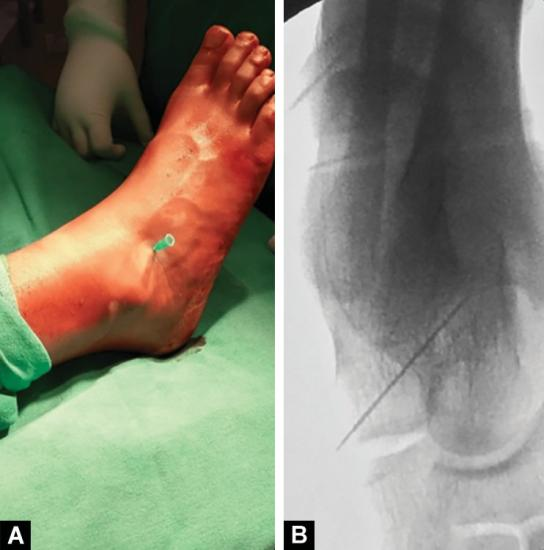
Pic 1 A and B: (A) Hypodermic needle inserted into sinus tarsi in the direction of canalis; (B) Image intensifier image confirming the correct position of the needle
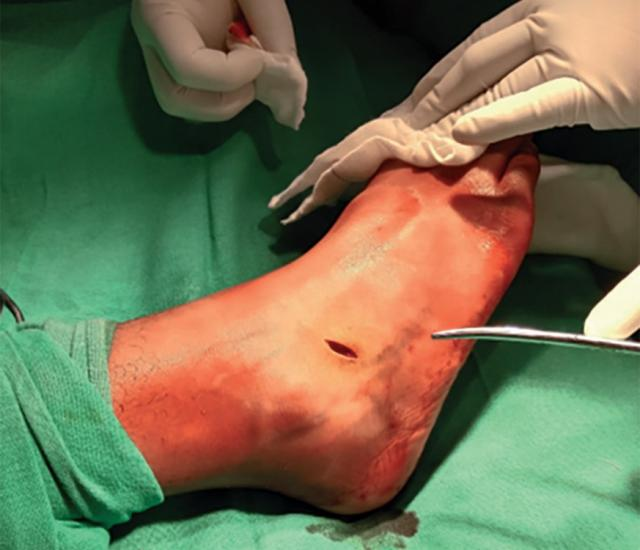
Pic 2 :Incision over sinus tarsi
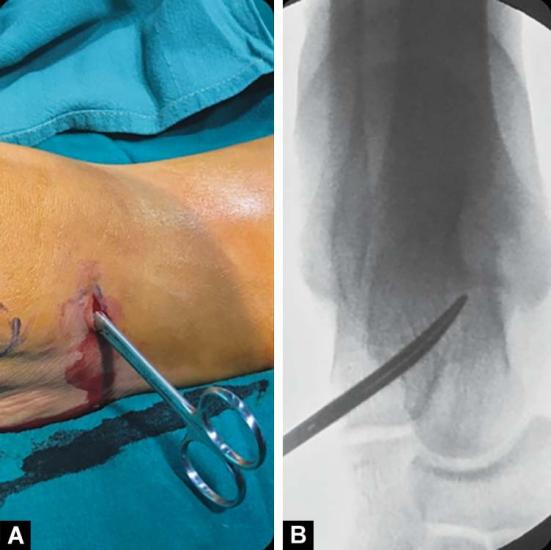
Pic 3 A and B: (A) Scissor placed inside sinus tarsi to cut TCIL; (B) Image intensifier image confirming the correct position of scissor
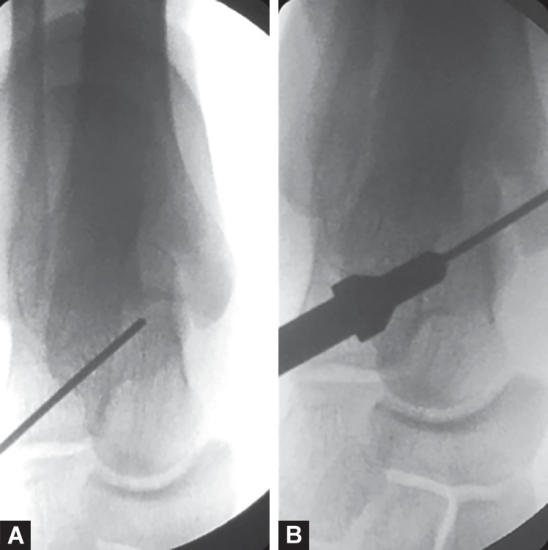
Pic 4 A and B: (A) Correct placement of guidewire; (B) Trial sizing being done over the guidewire
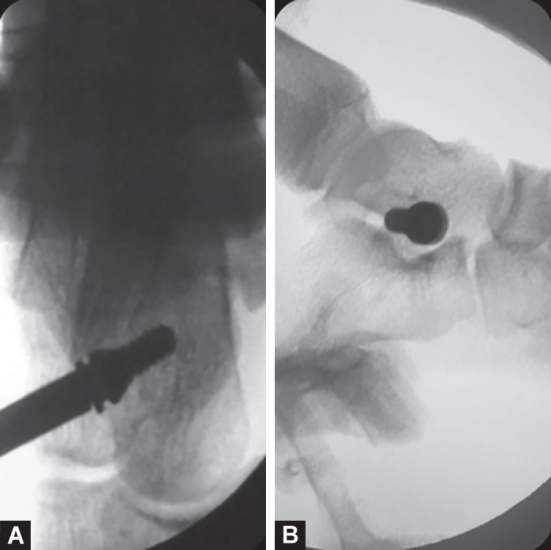
Pic 5 A and B: (A) Correct placement of CareFix sinus tarsal screw as seen on AP view (the device is entirely medial to the lateral wall of the talus); (B) Correct direction of the stent on a lateral view
Conclusion for Flat Foot Correction
Extra-osseous talotarsal stabilization (EOTTS) has resulted in excellent improvement in foot biomechanics, alleviation of symptoms like pain and cosmetic deformity, and restoration of normal foot radiological angles.
Want to be our distributor of pediatric implants,foot and ankle implants,pls don’t hesitate to contact with me. Email:[email protected] WhatsApp/WeChat:+86-15921878010